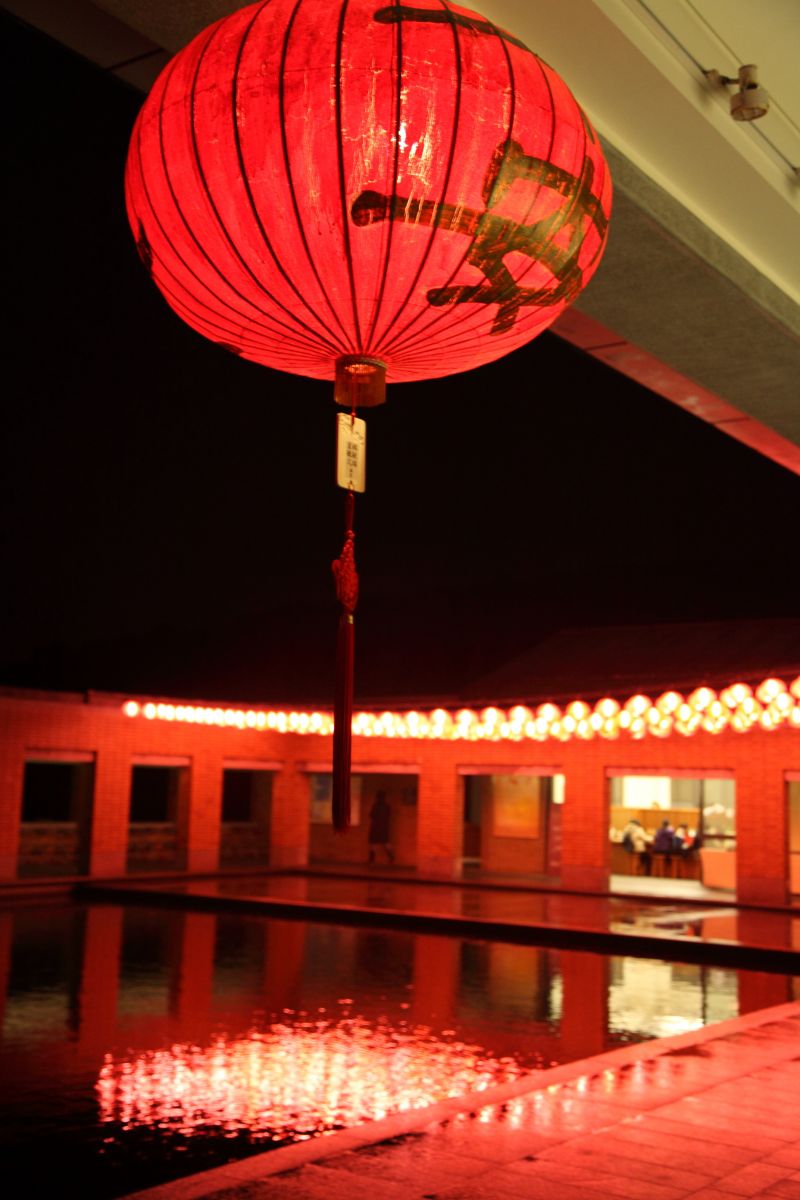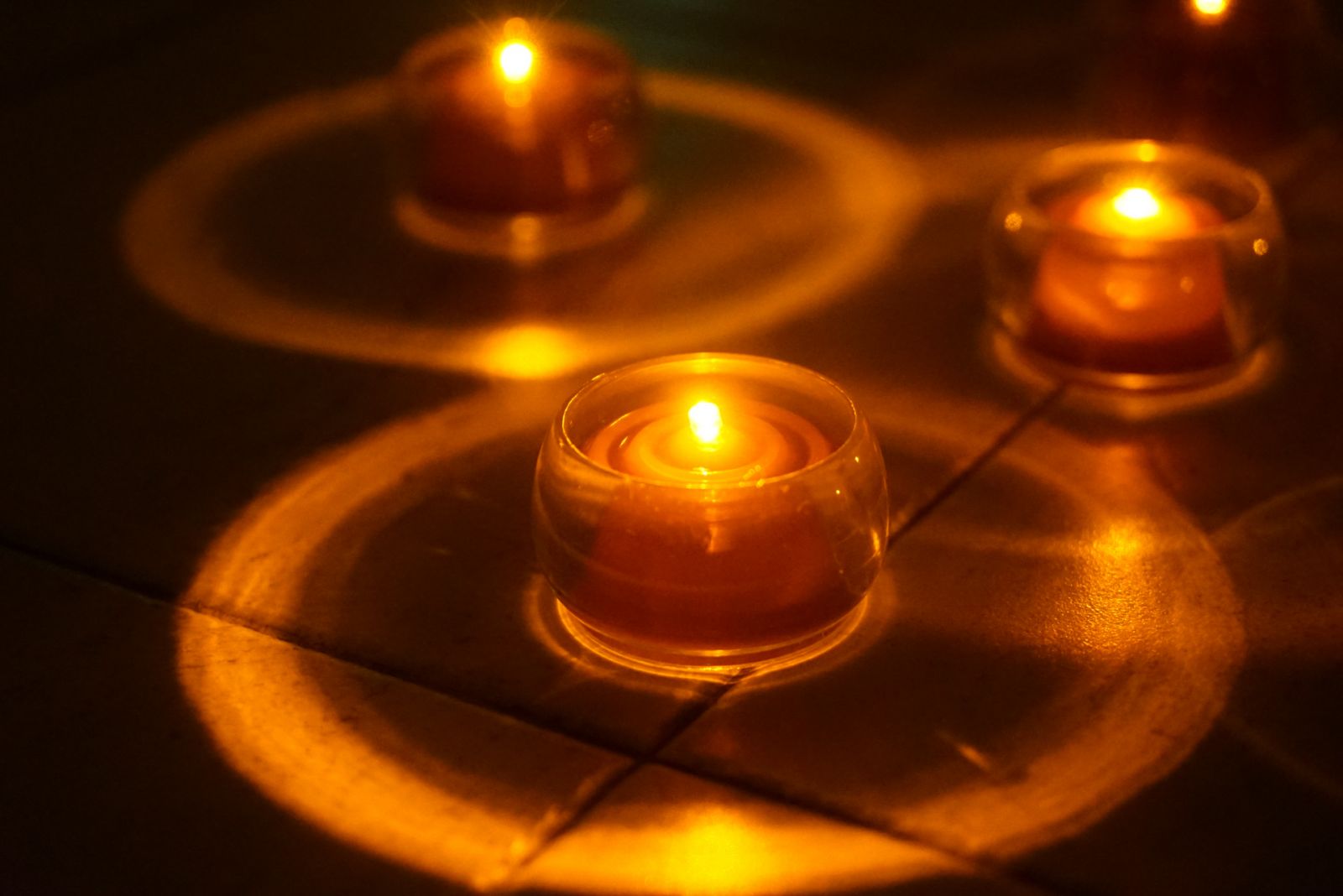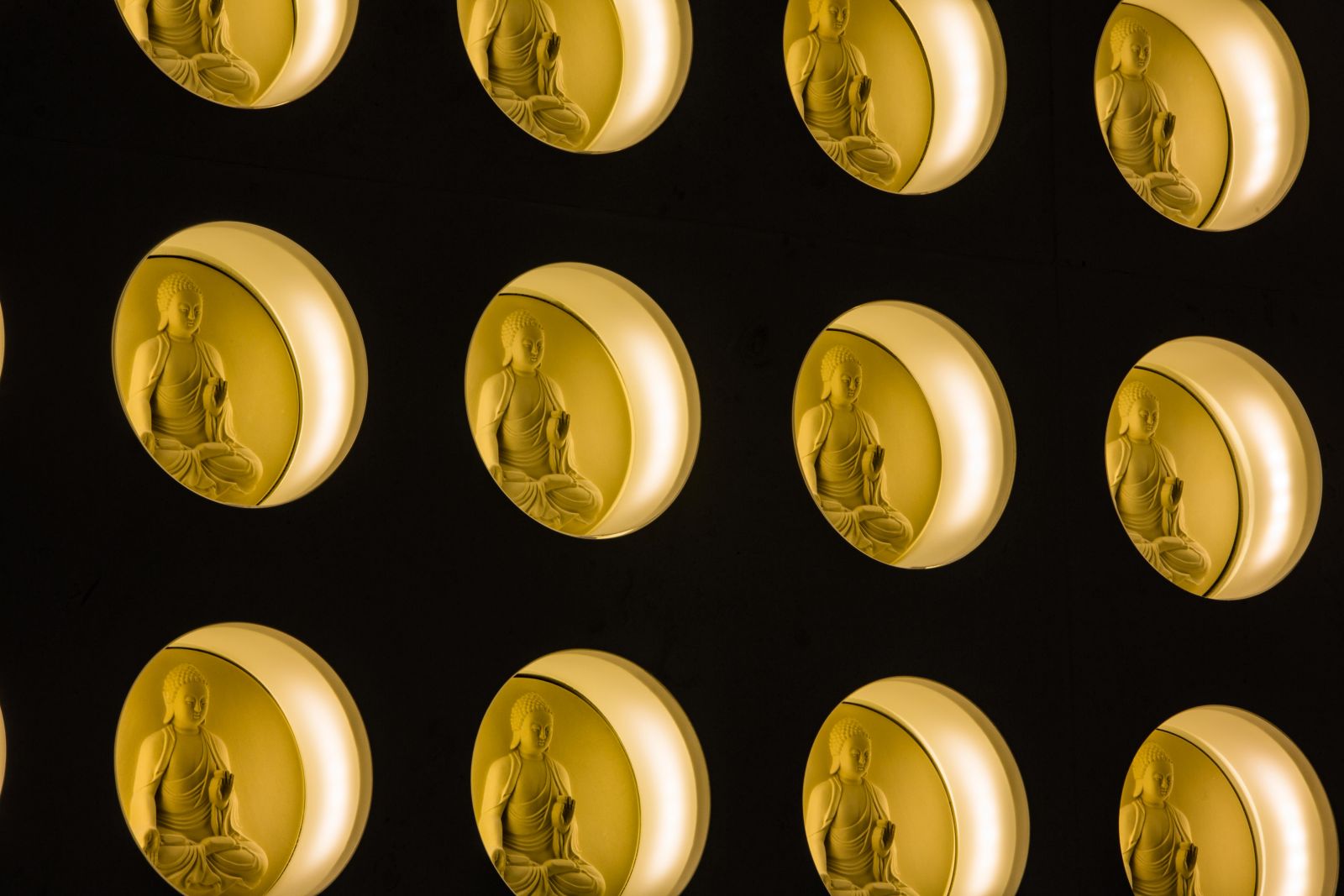Special Topics
Similarities and Differences in Light Offering in Different Countries
Since the spread of Buddhism beyond India, different forms of light offerings have developed in response to local customs in different regions, along with the related rituals and festivals. Let us visit Taiwan, Tibet, Thailand, Korea, and Japan to see how the practice of offering light has varied historically and geographically.Taiwan ─ offering light to the Buddha during the Lantern Festival and on the Buddha's Birth day
 The Buddhist practice of light offering in Taiwan mainly takes place during the Lunar New Year holidays and on the Buddha's Birthday in the fourth lunar month. The custom of visiting temples to light lamps as an offering during the Lunar New Year holidays reflects the fusion of the Buddhist culture and existing local customs after its introduction to China. After Buddhism spread to China, it was influenced by the original Chinese custom of carrying lanterns on the night of the Lantern Festival. Thus, Chinese Buddhists have since adopted the custom of lighting lamps at Buddhist temples during the Lunar New Year.
The Buddhist practice of light offering in Taiwan mainly takes place during the Lunar New Year holidays and on the Buddha's Birthday in the fourth lunar month. The custom of visiting temples to light lamps as an offering during the Lunar New Year holidays reflects the fusion of the Buddhist culture and existing local customs after its introduction to China. After Buddhism spread to China, it was influenced by the original Chinese custom of carrying lanterns on the night of the Lantern Festival. Thus, Chinese Buddhists have since adopted the custom of lighting lamps at Buddhist temples during the Lunar New Year.Regarding the connection between Buddhism and the Lantern Festival, legend has it that during the reign of Emperor Ming of Eastern Han dynasty, there was a debate between Buddhists and Taoists at White Horse Temple in Luoyang on the 15th of the first lunar month. Following the Buddhists' victory in the debate, Emperor Ming ordered that, around the 15th of the first lunar month, the royal palace and temples should be decorated with lanterns and festoons, while the general public, regardless of their social status, should hang lanterns as an expression of their respect and piety to Buddhism. This is how the festival on the 15th of the first lunar month acquired its common name as the Lantern Festival. Beginning with the Han Dynasty, the tradition of lighting lanterns on this day flourished into the Tang dynasty and contributed to the popularity of festive lantern appreciation events, where lanterns were hung everywhere in the streets during the Festival.
After the integration of the Buddhist practice of lamp lighting and folk customs, most people would visit Buddhist temples during the Lunar New Year to light a "brightness-and-illumination lamp" both for themselves and their family members. Consequently, on the first day of the lunar year, it is common to see entire families gathering together at major temples to make lamp offerings or participate in Dharma services.
The Buddha's Birthday, celebrated on the eighth day of the fourth lunar month, holds special significance for Buddhists. Most temples organize events for bathing the Buddha and making lamp offering to celebrate the day, when Buddhists in different parts of the world will visit temples and shower the figurine of Prince Siddhārtha with sacred water. Apart from sincerely praying for the eradication of the three poisons ─ greed (rāga), anger (dveṣa), and ignorance (moha) ─ to maintain purity in body, speech, and mind, and for peace and stability of society, people also light up a lamp on this occasion to pray that the Buddha guides people with his wisdom to refrain from evil and cultivate wholesomeness.
In addition, since the lamp symbolizes instruction, celebration, and indication, making lamp offerings is not confined to Buddhists, as everyone hopes to enjoy an auspicious good fortune during the Lunar New Year.
Tibet ─ lamp offering at any time and space and the Galdan Namchot with myriad lights
 For Tibetans, lighting lamps is divided into daily lamp offering at home and lighting a lamp in temples. Most Tibetans are Buddhists, and nearly every household enshrines the Buddha image, so it is customary for them to offer a perpetual butter lamp before the Buddhist shrine. In addition, as Tibetans follow the practice of circumambulating a chorten (stupa) and prostrating to the Buddha at temples, they tend to bring their own butter lamps or purchase them from temples to make light offerings to the Buddha.
For Tibetans, lighting lamps is divided into daily lamp offering at home and lighting a lamp in temples. Most Tibetans are Buddhists, and nearly every household enshrines the Buddha image, so it is customary for them to offer a perpetual butter lamp before the Buddhist shrine. In addition, as Tibetans follow the practice of circumambulating a chorten (stupa) and prostrating to the Buddha at temples, they tend to bring their own butter lamps or purchase them from temples to make light offerings to the Buddha.In Tibet, there is also the Galdan Namchot in commemoration of Je Tsongkhapa, a pivotal figure in the formation of Tibetan Buddhism, who founded the Gelug School, one of the four major Tibetan Buddhist schools. After his parinirvana, people mark the 25th day of the tenth month of the Tibetan lunar calendar as Galdan Namchot to remember him. On the eve of this day, Tibetans illuminate lamps to commemorate him, honoring his courage and accomplishment in reforming Tibetan Buddhism. Jokhang Monastery in Lhasa, for example, conducts activities such as Buddhist scripture chanting, Tibetan prostrations, and lamp offerings on this day, to commemorate Je Tsongkhapa and pray for auspiciousness in all aspects of life.
For Tibetans, offering lamps has become an indispensable part of their regular daily practice. On Galdan Namchot, nearly every household in Lhasa makes butter lamp offerings at rooftops, windowsills, indoor Buddhist halls, Buddhist niches, and offering tables. Likewise, Tibetans light butter lamps at temples, around chortens, on palace rooftops, and wherever feasible for making lamp offerings. Hence, on this particular day, the brilliance of butter lamps illuminates the whole town, creating a spectacular view of lights.
The main difference between lamp offerings in Tibetan Buddhism and Chinese Buddhism is that the former can be made at any time and place, while the latter mostly takes place during the Lunar New Year or on Buddha's Birthday.
Korea ─ lantern-lighting celebration integrating traditional lantern festival
After its introduction to China, Buddhism further spread to Korea in the north, and which developed its own characteristics. For instance, their custom of lantern lighting, while following the Buddhist ritual, combines the veneration for Buddhist patriarchs and ancestral respect. The distinctive feature of Buddhist lantern lighting in Korea is Yeondeunghoe (연등회). Originally initiated to mark the Buddha's Birthday, now it is observed as a nationwide event.
Regarding the date of Yeondeunghoe, during the Goryeo Dynasty (918 CE-1392 CE), Taejo Wang Kŏn for example (918-943), celebrated it on the 15th of the first lunar month. Hyeonjong Wang Sun (1010-1031) changed it to the 15th of the second lunar month and the Nirvana Day of the Buddha. Gongyang Wang Yo (1389-1392) further adjusted the date to the eighth of the fourth lunar month, namely on the Buddha's Birthday. Today, the practice of lighting lanterns is not only for celebration of the Buddha's Birthday, but has also become an integral part of local customs, as the lantern-lighting festival.
The lantern-lighting festival not only presents objects symbolizing Buddhism, but also contains a variety of exhibitions featuring traditional lanterns and entertainment activities. A major appeal of the festival is traditional Korean lanterns with colorful designs, with each design conveying different meanings: tortoise- and crane-shaped lanterns symbolize longevity; those in the shapes of pomegranate, water melon, and garlic represent a wish for having many descendants; carp-shaped lanterns signify a wish for accomplishment and success; and tiger and leopard designs serve to ward off evil.
For the whole festive procession, as well as various Buddhist and folk celebrations, people can also join the lantern parade in person.
Japan ─ lamp offerings as prayers for the deceased
 Japanese Buddhist schools, including Mikkyō (Vajrayana practices), Jōdo-shū (Pure Land), and Tendai, all have lamp lighting rituals. People usually make lamp offerings when they have something to wish for, or when Buddha images are open to the public for admiration, rather than concentrating on New Year holidays or Buddha's Birthday. Additionally, with long-term integration of Buddhism and Shinto in Japan, lamp lighting is not a ritual reserved exclusively for monasteries and temples.
Japanese Buddhist schools, including Mikkyō (Vajrayana practices), Jōdo-shū (Pure Land), and Tendai, all have lamp lighting rituals. People usually make lamp offerings when they have something to wish for, or when Buddha images are open to the public for admiration, rather than concentrating on New Year holidays or Buddha's Birthday. Additionally, with long-term integration of Buddhism and Shinto in Japan, lamp lighting is not a ritual reserved exclusively for monasteries and temples.In Japan, it is common for company owners to light lamps to pray for prosperity of their business. Most people, on the other hand, light lamps to pray for their health and academic performance in school. To make lamp offerings, people may use candles and oil lamps (as seen in Dharma services). Alternatively, they can prepare metal or stone lamp holders (resembling the Eternal Flame) filled with oil to make offerings. Depending on their wishes, people can dedicate their lamp offerings to the corresponding Buddhas and Bodhisattvas.
An additional, though less prevalent, ritual in Japan, is the light offering as a prayer for the deceased. For instance, Gozan no Okuribi (五山送り火) is an outdoor ceremony in which giant torches are arranged to form the character for "great" to deliver the spirits of the dead. People may also pay visits to temples housing the spirit tablets of their ancestors or friends to make lamp offerings as prayers for the departed on a long term basis. This practice differs from that in other Buddhist countries, where lamp offerings are usually made for the living.
Thailand ─ lamp lighting featuring water lanterns
In Thailand, a country in which the majority of its population practices Theravada Buddhism, their custom of lamp lighting practice is rather different from other Buddhist countries, in that ritual is mostly practiced on Loy Krathong. The origin of the Loy Krathong festival has to do with the likely harm caused by abundant precipitation in Mainland Southeast Asia. Therefore, people in low-lying areas, such as places near canals and rivers, release water lanterns every full moon (the 15th day) of the 12th month in the Thai lunar calendar as prayers to the God of River (Phra Kone Ka) for reduction of floods, a bountiful harvest, and the dispelling of misfortune.
By observing Loi Krathong, people in Thailand express their respect to the God of River, appreciating his provision of abundant water sources. They also beg his pardon for the pollution people have made to rivers while using water. Meanwhile, through this practice, people wish to wash away their faults over the previous year, as well as refresh their minds and souls.
A traditional water lantern is made from banana tree trunks. To make one, banana trees are cut down, with the trunks sliced into round disks 10 centimeters thick and 10 to 20 centimeters in diameter. Then, a lotus made from banana leaves is placed on the disk, adorned with incense sticks, orchids or chrysanthemums, lit candles, and sometimes coins. Holding the lantern with both hands, people bring it to riversides to pray for blessings before placing it on the water, allowing it to float away with the current.
Today in Thailand, for Loi Krathong celebrations, cities near lakes or rivers, such as Bangkok or Chiang Mai, will hold a variety of festive activities including parades, water lantern offerings, and firework shows. Thai people have blended Buddhist lamp offerings with local festivities, thereby turning Loi Krathong into the second-largest festival after the Water Festival.
Related articles:
The Origin and Transformation of Lamp Offerings
The Diverse Forms of Lamp offerings
The Design of Lamp Offerings at Dharma Drum Mountain
Similarities and Differences in Light Offering in Different Countries
Perspectives on Lamp Lighting Across Different Cultures
Commonly Asked Questions on Light Offering
Resource: Issue 281 of Humanity Magazine, Dharma Drum Publishing Corporation
Translation: Sinag-ling Li (李祥苓)
Editing: Keith Brown, Chia-Cheng Chang (張家誠)
